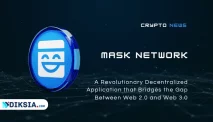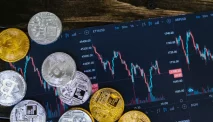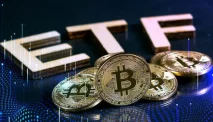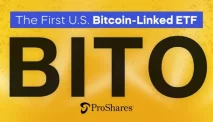Diksia.com - Ethereum is the world’s largest blockchain platform for decentralized applications, but it also faces some challenges, such as low scalability, high gas fees, and poor user experience.
How can these challenges be solved? One possible solution is Polygon, a multi-chain system that offers Ethereum-compatible scaling and infrastructure solutions for decentralized applications.
In this article, we will explore what Polygon is, how it works, why it is important, and what are its advantages and disadvantages.
We will also look at the history, technology, market, and investment aspects of Polygon. Let’s get started!
Polygon Introduction
Polygon (MATIC) is a Layer-2 scaling solution for Ethereum. It is designed to improve the scalability and performance of Ethereum by providing a way to execute transactions off-chain and then settle them on-chain. This allows for faster and cheaper transactions, while still maintaining the security and decentralization of Ethereum.
Polygon Details:
| Name | Polygon |
|---|---|
| Symbol | MATIC |
| Type | ERC-20 token |
| Launch date | October 2017 |
| Consensus mechanism | Proof-of-Stake |
| Total supply | 10 billion MATIC |
| Circulating supply | 9.3 billion MATIC |
What is Polygon?
Polygon is a protocol and framework for building and connecting Ethereum-compatible blockchain networks. It is not a single blockchain, but rather a collection of interconnected blockchains that work together to provide scalability, security, and flexibility.
Polygon (previously Matic Network) is a platform for Ethereum scaling and infrastructure development. Its core component is Polygon SDK, a modular, flexible framework that supports building multiple types of applications.
Using Polygon, one can create optimistic rollup chains, ZK rollup chains, stand alone chains or any other kind of infra required by the developer.
Polygon effectively transforms Ethereum into a full-fledged multi-chain system (aka Internet of Blockchains). This multi-chain system is akin to other ones such as Polkadot, Cosmos, Avalanche etc. with the advantages of Ethereum’s security, vibrant ecosystem and openness.
The MATIC token is the native token of the Polygon network. It is used to pay for transaction fees, participate in governance, and secure the network. The $MATIC token will continue to exist and will play an increasingly important role, securing the system and enabling governance.
Who Are the Founders of Polygon?
Polygon was co-founded by Jaynti Kanani, Sandeep Nailwal and Anurag Arjun, two experienced blockchain developers and a business consultant. Before moving to its network in 2019, the Polygon team was a huge contributor in the Ethereum ecosystem.
They noticed the scalability issues and high gas fees on Ethereum and decided to create a solution that would enhance the user experience and performance of decentralized applications. They also envisioned a platform that would enable interoperability and collaboration among different blockchain networks.
Why is Polygon important?
Polygon is important because it addresses some of the major limitations of Ethereum, such as low throughput, poor user experience, and lack of community governance.
By offering various scaling and infrastructure solutions, Polygon enables developers to create fast, cheap, and secure decentralized applications that can cater to diverse needs and use cases.
Polygon also supports the vision of Web 3.0, where users can access a decentralized internet that is open, transparent, and permissionless.
What Makes Polygon Unique?
Polygon is unique because it offers a flexible and modular framework that allows developers to choose the best scaling solution for their needs. Polygon supports both layer 2 solutions (such as ZK rollups and optimistic rollups) and sidechains (such as Plasma and Proof-of-Stake chains).
Polygon also enables the creation of stand alone chains or enterprise chains that can have their own consensus mechanisms and features.
Moreover, Polygon aims to create a network of networks that can communicate and exchange value with each other seamlessly. This means that users can access multiple blockchains and applications without leaving the Ethereum ecosystem.
What are the key features of Polygon?
Some of the key features of Polygon are:
- High scalability: Polygon can process up to 65,000 transactions per second on a single sidechain, with a block confirmation time of less than two seconds.
- Low cost: Polygon reduces the gas fees on Ethereum by using its own native token MATIC as the gas currency. Users can transact on Polygon with near-zero fees.
- Security: Polygon leverages the security of Ethereum by using a set of validators who stake MATIC tokens to secure the network. Polygon also uses fraud proofs and data availability checks to ensure the validity of transactions.
- User experience: Polygon improves the user experience of decentralized applications by offering fast transactions, easy onboarding, and seamless interoperability.
- Developer experience: Polygon provides a user-friendly SDK that simplifies the development process and supports multiple programming languages. Developers can also access various tools and resources to build and deploy their applications on Polygon.
Polygon History
Polygon was originally launched in 2017 as Matic Network. It rebranded to Polygon in 2021. The MATIC token was first issued in an initial coin offering (ICO) in 2017. The ICO raised $5 million. Polygon has been growing rapidly in recent months. The MATIC token price has increased by over 1000% in the past year.
How did Polygon come about?
Polygon was originally launched as Matic Network in October 2017 by Jaynti Kanani, Sandeep Nailwal and Anurag Arjun. The project was inspired by Plasma, a scaling proposal by Vitalik Buterin that suggested creating child chains on top of Ethereum to increase its capacity.
Matic Network focused on implementing Plasma-based sidechains that would offer faster and cheaper transactions for decentralized applications.
In April 2019, Matic Network conducted an initial exchange offering (IEO) on Binance Launchpad and raised $5 million by selling 19% of its total supply of MATIC tokens.
In June 2020, Matic Network launched its mainnet with its first set of validators who secured the network by staking MATIC tokens.
In February 2021, Matic Network rebranded itself as Polygon to reflect its expanded vision and scope. The project announced that it would not only offer Plasma-based sidechains but also other scaling solutions such as ZK rollups, optimistic rollups, and stand alone chains.
Polygon also revealed its ambition to create a multi-chain system that would connect different blockchain networks and enable interoperability and collaboration.
What is the development roadmap for Polygon?
Polygon has a comprehensive roadmap that outlines its short-term and long-term goals and milestones. Some of the highlights of Polygon’s roadmap are:
- Launching Polygon SDK, a software development kit that allows developers to create and deploy their own scaling solutions on Polygon.
- Launching Polygon zkEVM, a ZK rollup chain that offers full EVM compatibility and scalability for Ethereum applications.
- Launching Polygon Miden, a decentralized rollup chain that leverages execution proofs of concurrent, local transactions.
- Launching Polygon ID, a decentralized identity solution that enables users to own and control their digital identities across multiple blockchains.
- Launching Polygon Hermez, a ZK rollup chain that focuses on scaling payments and token transfers.
- Launching Polygon Zero, a ZK rollup chain that supports general-purpose smart contracts and zero-knowledge proofs.
- Launching Polygon Avail, a data availability solution that provides reliable and tamper-proof data feeds for layer 2 solutions and standalone chains.
- Launching Polygon Nightfall, a privacy-preserving solution that enables confidential transactions and smart contracts on Ethereum.
Who are the key people behind Polygon?
Polygon is led by a team of experienced and passionate blockchain developers, entrepreneurs, and community builders. Some of the key people behind Polygon are:
- Jaynti Kanani: Co-founder and CEO of Polygon. He is a full-stack developer and blockchain engineer who previously worked at Housing.com as a data scientist. He is also the co-author of the Plasma MVP specification.
- Sandeep Nailwal: Co-founder and COO of Polygon. He is a blockchain developer and entrepreneur who previously worked at Deloitte and Welspun Group. He is also the founder of ScopeWeaver, a platform for professional services in India.
- Anurag Arjun: Co-founder and CPO of Polygon. He is a business consultant and product manager who previously worked at IRIS Business Services and SNL Financial. He is also the co-founder of Daoventures, a DeFi robo-advisor platform.
- Mihailo Bjelic: Co-founder and core researcher of Polygon. He is a blockchain researcher and engineer who previously worked at Decenter, a blockchain research and development company. He is also the co-author of the Plasma Group specification.
Polygon Technology
What is the underlying technology of Polygon?
Polygon is based on the Ethereum network, which is the world’s largest blockchain platform for decentralized applications. Ethereum uses a proof-of-work consensus mechanism to secure its network and validate transactions. However, this mechanism has some drawbacks, such as low scalability, high gas fees, and environmental impact.
Polygon aims to overcome these challenges by offering various scaling and infrastructure solutions that are compatible with Ethereum. These solutions are based on different technologies, such as:
- Plasma: A layer 2 scaling solution that creates child chains on top of Ethereum that can process transactions faster and cheaper. Plasma chains use fraud proofs and data availability checks to ensure the security and validity of transactions.
- Proof-of-Stake: A consensus mechanism that uses validators who stake tokens to secure the network and validate transactions. Proof-of-Stake chains can operate as sidechains or standalone chains that can have their own features and rules.
- ZK rollups: A layer 2 scaling solution that uses zero-knowledge proofs to compress transactions and store them on Ethereum. ZK rollups can achieve high scalability and security without compromising on decentralization or compatibility.
- Optimistic rollups: A layer 2 scaling solution that uses optimistic assumptions to execute transactions off-chain and post them on Ethereum. Optimistic rollups can support general-purpose smart contracts and offer fast finality with low gas fees.
How does Polygon work?
Polygon works by providing developers with an easy-to-use platform to create and deploy their own scaling solutions on Ethereum. Developers can use the Polygon SDK, a software development kit that offers various modules and plugins to customize their solutions according to their needs.
Developers can choose from different types of scaling solutions, such as:
- Plasma chains: These are sidechains that use Plasma framework to offer fast and cheap transactions for specific use cases, such as gaming or payments. Plasma chains use MATIC tokens as gas fees and rely on validators who stake MATIC tokens to secure the network. Users can deposit ETH or ERC-20 tokens from Ethereum to Plasma chains via smart contracts and withdraw them back via exit mechanisms.
- Proof-of-Stake chains: These are sidechains or standalone chains that use Proof-of-Stake consensus mechanism to offer high scalability and flexibility for various applications. Proof-of-Stake chains use MATIC tokens as gas fees and validators who stake MATIC tokens to secure the network. Users can transfer ETH or ERC-20 tokens from Ethereum to Proof-of-Stake chains via bridges or swap mechanisms.
- ZK rollup chains: These are layer 2 scaling solutions that use zero-knowledge proofs to compress transactions and store them on Ethereum. ZK rollup chains can achieve high scalability and security without compromising on decentralization or compatibility. ZK rollup chains use ETH as gas fees and do not require validators to secure the network. Users can transfer ETH or ERC-20 tokens from Ethereum to ZK rollup chains via bridges or swap mechanisms.
- Optimistic rollup chains: These are layer 2 scaling solutions that use optimistic assumptions to execute transactions off-chain and post them on Ethereum. Optimistic rollup chains can support general-purpose smart contracts and offer fast finality with low gas fees. Optimistic rollup chains use ETH as gas fees and rely on sequencers who batch transactions and submit them to Ethereum. Users can transfer ETH or ERC-20 tokens from Ethereum to optimistic rollup chains via bridges or swap mechanisms.
Users can interact with different scaling solutions on Polygon using various tools and applications, such as:
- Polygon Wallet: A web-based wallet that allows users to manage their MATIC tokens and access various Polygon applications.
- Polygon Bridge: A web-based interface that allows users to transfer their assets between Ethereum and Polygon networks.
- Polygon Scan: A block explorer that allows users to view and verify transactions, blocks, contracts, and events on Polygon networks.
- Polygon Studio: A web-based IDE that allows developers to create and deploy smart contracts and decentralized applications on Polygon networks.
What are the advantages of Polygon’s technology?
Polygon’s technology offers several advantages for both developers and users, such as:
- Scalability: Polygon can handle thousands of transactions per second with low latency and high throughput, enabling fast and smooth user experience for decentralized applications.
- Cost-efficiency: Polygon reduces the gas fees on Ethereum by using its own native token MATIC or ETH as the gas currency, depending on the scaling solution. Users can transact on Polygon with near-zero fees or minimal fees.
- Security: Polygon leverages the security of Ethereum by using a set of validators who stake MATIC tokens to secure the network or by using zero-knowledge proofs or fraud proofs to ensure the validity of transactions.
- Compatibility: Polygon is fully compatible with Ethereum, meaning that it supports the Ethereum Virtual Machine (EVM), the Ethereum tooling, and the Ethereum standards. Developers can easily port their existing Ethereum applications to Polygon or create new ones using familiar tools and frameworks.
- Interoperability: Polygon aims to create a network of networks that can communicate and exchange value with each other seamlessly. This means that users can access multiple blockchains and applications without leaving the Ethereum ecosystem.
Polygon Market
What is the current market capitalization of Polygon?
According to CoinMarketCap, as of August 15, 2023, the current market capitalization of Polygon is $9.8 billion, ranking it as the 14th largest cryptocurrency by market cap. The current price of one MATIC token is $1.06, with a 24-hour trading volume of $1.2 billion.
What is the trading volume of Polygon?
According to CoinGecko, as of August 15, 2023, the trading volume of Polygon is $1.2 billion, ranking it as the 13th most traded cryptocurrency by volume. The top exchanges that list MATIC are Binance, Coinbase Pro, Huobi Global, OKEx, and FTX.
What are the top exchanges that list Polygon?
Here are some of the top exchanges that list Polygon:
- Binance
- Huobi Global
- Upbit
- Coinbase Pro
- Kraken
- Gemini
- Bitstamp
- MEXC
- Crypto.com
- Bybit
- And more
These exchanges offer a variety of features and trading options, so you can choose the one that best suits your needs. For example, Binance is one of the largest exchanges in the world and offers a wide variety of trading pairs. Huobi Global is another large exchange with a good selection of Polygon trading pairs.
Upbit is a popular exchange in South Korea that offers low fees. Coinbase Pro is a good option for US residents who want to trade Polygon. Kraken is a well-respected exchange that offers margin trading. Gemini is a secure exchange that is known for its focus on compliance.
Bitstamp is a long-standing exchange that is popular with European traders. MEXC is a newer exchange that offers a wide variety of trading pairs and margin trading. Crypto.com is a popular exchange with a good selection of features, including staking and lending. Bybit is a popular exchange for derivatives trading.
It is important to do your research before choosing an exchange to trade Polygon. Consider the fees, features, and security offered by each exchange to find the best one for you.
Polygon Investment
Is Polygon a good investment?
Polygon is a promising project that offers various scaling and infrastructure solutions for Ethereum, which is the leading platform for decentralized applications. Polygon has a strong team, a clear vision, a comprehensive roadmap, and a vibrant community.
Polygon also has a growing ecosystem of partners and collaborators, such as Decentraland, Aave, SushiSwap, OpenSea, and more. However, investing in cryptocurrency is always risky and volatile, and there are no guarantees of returns or profits.
Investors should do their own research, analysis, and due diligence before making any investment decisions. Investors should also be aware of the potential challenges and risks that Polygon may face, such as:
- Competition: Polygon is not the only project that offers scaling and infrastructure solutions for Ethereum. There are other projects, such as Optimism, Arbitrum, zkSync, and more, that are also working on similar or different approaches to solve the scalability problem. Polygon may face competition from these projects in terms of adoption, innovation, and market share.
- Regulation: Polygon operates in a highly uncertain and dynamic regulatory environment, where different jurisdictions may have different rules and laws regarding cryptocurrency and blockchain. Polygon may face legal or regulatory challenges or barriers that could affect its operations, development, or growth.
- Technology: Polygon relies on complex and novel technologies, such as Plasma, ZK rollups, optimistic rollups, and more, that are still in development and testing stages. Polygon may encounter technical issues, bugs, glitches, or vulnerabilities that could compromise its security, functionality, or performance.
What are the risks of investing in Polygon?
Some of the risks of investing in Polygon are:
- Market risk: Polygon is subject to the fluctuations and volatility of the cryptocurrency market, which is influenced by various factors, such as supply and demand, news and events, sentiment and speculation, and more. Polygon’s price may rise or fall significantly in a short period of time, depending on the market conditions and trends.
- Liquidity risk: Polygon’s liquidity may vary depending on the availability and accessibility of exchanges, platforms, and services that support MATIC trading. Polygon’s liquidity may also be affected by network congestion, transaction fees, or technical issues that could limit or delay the transfer of MATIC tokens.
- Regulatory risk: Polygon’s regulatory status may change depending on the policies and actions of governments, authorities, or agencies that oversee or regulate cryptocurrency and blockchain. Polygon may face legal or regulatory challenges or barriers that could affect its operations, development, or growth.
- Technology risk: Polygon’s technology may encounter technical issues, bugs, glitches, or vulnerabilities that could compromise its security, functionality, or performance. Polygon may also face cyberattacks, hacks, or breaches that could result in the loss or theft of MATIC tokens or user data.
How can I buy Polygon?
There are different ways to buy Polygon (MATIC) tokens, such as:
- Buying MATIC with fiat currency: Some exchanges or platforms allow users to buy MATIC directly with fiat currency (such as USD, EUR, GBP, etc.) using various payment methods (such as credit card, debit card, bank transfer, etc.). For example, users can buy MATIC with fiat currency on Coinbase, Binance, Kraken, Gemini, and more.
- Buying MATIC with cryptocurrency: Some exchanges or platforms allow users to buy MATIC with other cryptocurrencies (such as BTC, ETH, USDT, etc.) using various trading pairs (such as MATIC/BTC, MATIC/ETH, MATIC/USDT, etc.). For example, users can buy MATIC with cryptocurrency on Binance, Coinbase Pro, Huobi Global, OKEx, FTX, and more.
- Buying MATIC with decentralized exchanges (DEXs): Some decentralized exchanges (DEXs) allow users to buy MATIC with other cryptocurrencies (such as ETH) using smart contracts and liquidity pools (such as Uniswap, SushiSwap, QuickSwap, etc.). For example, users can buy MATIC with ETH on Uniswap, SushiSwap, QuickSwap, etc.
After buying MATIC tokens, users can store them in various wallets that support MATIC, such as:
- Polygon Wallet: A web-based wallet that allows users to manage their MATIC tokens and access various Polygon applications.
- MetaMask: A browser extension and mobile app that allows users to interact with Ethereum and Polygon networks and applications.
- Trust Wallet: A mobile app that allows users to store and manage multiple cryptocurrencies, including MATIC.
- Coinbase Wallet: A mobile app that allows users to store and manage multiple cryptocurrencies, including MATIC, and connect with decentralized applications.
- Ledger: A hardware wallet that allows users to store and secure their MATIC tokens offline.
Conclusion
Polygon is a platform for Ethereum scaling and infrastructure development that offers various solutions for developers and users. Polygon aims to transform Ethereum into a multi-chain system that can support diverse applications and use cases.
Polygon has a strong team, a clear vision, a comprehensive roadmap, and a vibrant community. Polygon also has a growing ecosystem of partners and collaborators, such as Decentraland, Aave, SushiSwap, OpenSea, and more.
However, investing in Polygon is not without risks and challenges. Polygon faces competition from other scaling projects, uncertainty from the regulatory environment, and potential technical issues or vulnerabilities.
Investors should do their own research, analysis, and due diligence before making any investment decisions. Investors should also be aware of the market fluctuations and volatility of the cryptocurrency industry.






